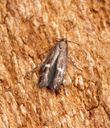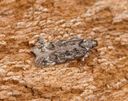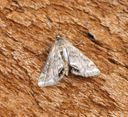Hooktip Moths
Drepaninae
Classification
- Phylum: Arthropoda
- Subphylum: Hexapoda
- Class: Insecta
- Order: Lepidoptera
- Superfamily: Drepanoidea
- Family: Drepanidae
- Subfamily: Drepaninae
Pronunciation
How to pronounce Drepaninae: //drɛˈpænəˌni//
These audio files are automatically generated. While they are not always 100% accurate, they are a good starting point.
Images






Summary
Drepaninae is a subfamily of hooktip moths characterized by their unique wing shape, comprising species that inhabit various locations across North America. With unresolved internal systematics, they represent a significant but less-studied group within the Lepidoptera.
Physical Characteristics
Wing shape is typically hook-tipped, with variations observed among different species. Drepana species and Oreta rosea have distinctive hook-tipped wings.
Identification Tips
Look for the characteristic hook-tipped wing structure in Drepana species and Oreta rosea. Eudeilinia species do not display this feature.
Habitat
Drepaninae are found throughout various habitats across North America but are absent in Yukon and Alaska.
Distribution
This subfamily is distributed throughout North America, with 5 species recorded in 3 genera in the region, and 4 species in Canada.
Diet
The diet of larvae typically includes foliage of various plants, but specific dietary preferences may vary by species.
Life Cycle
Life cycle details specific to Drepaninae are not well documented but generally include egg, larval, pupal, and adult stages typical of moths.
Reproduction
Reproductive behavior and specifics are not extensively detailed for Drepaninae, but like other moths, they likely exhibit sexual reproduction with oviposition on or near host plants.
Predators
Predators of Drepaninae may include birds, small mammals, and other insectivorous wildlife but specifics are context-dependent.
Ecosystem Role
Drepaninae play a role in ecosystems, contributing to pollination and acting as herbivores during their larval stages.
Evolution
Drepaninae are the largest subfamily in the Drepanidae family, with taxonomy still being refined and phylogenetic relationships not fully resolved.
Similar Taxa
Tags
- Drepaninae
- Hooktip Moths
- Lepidoptera
- Drepanidae
- North America